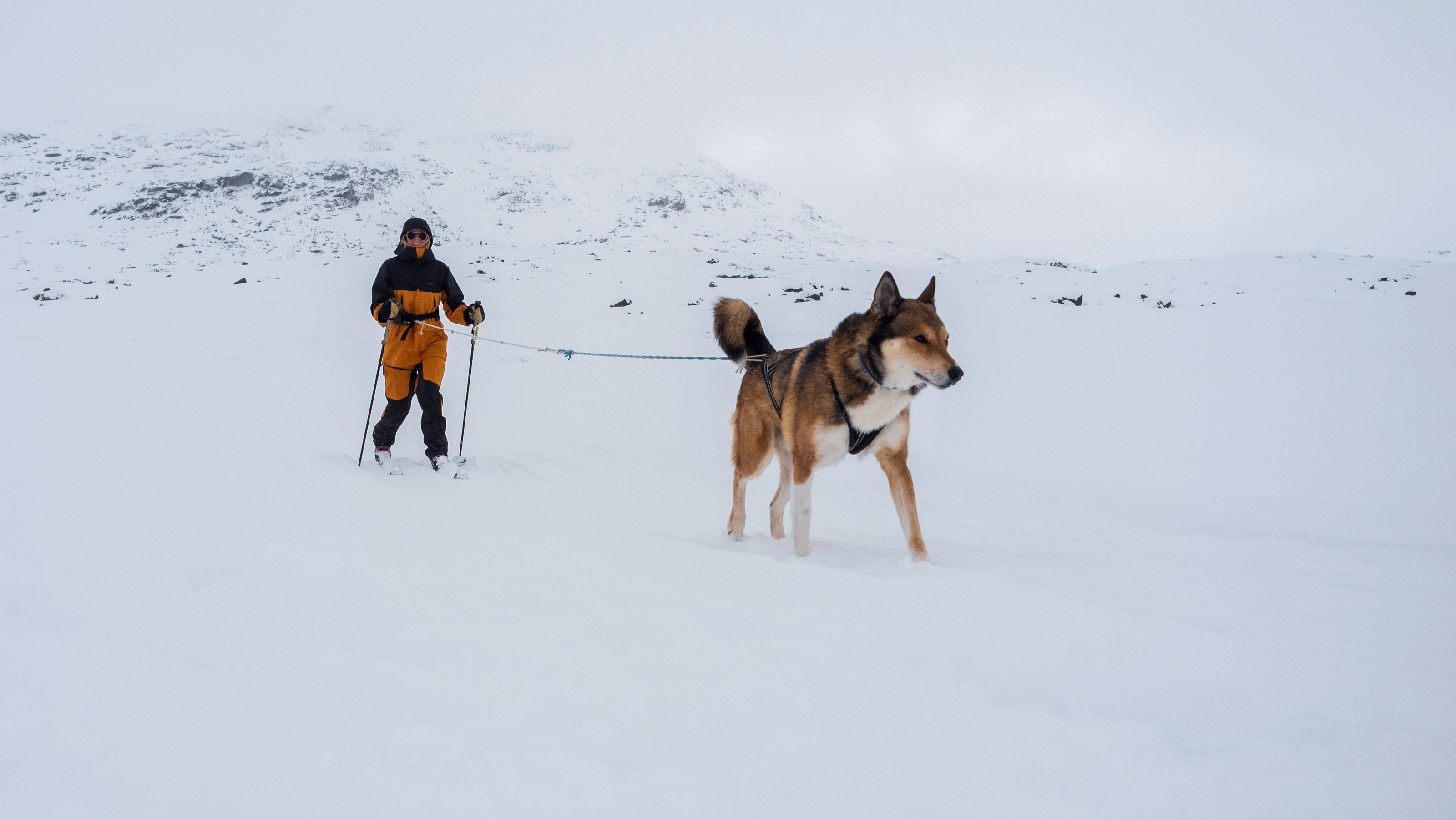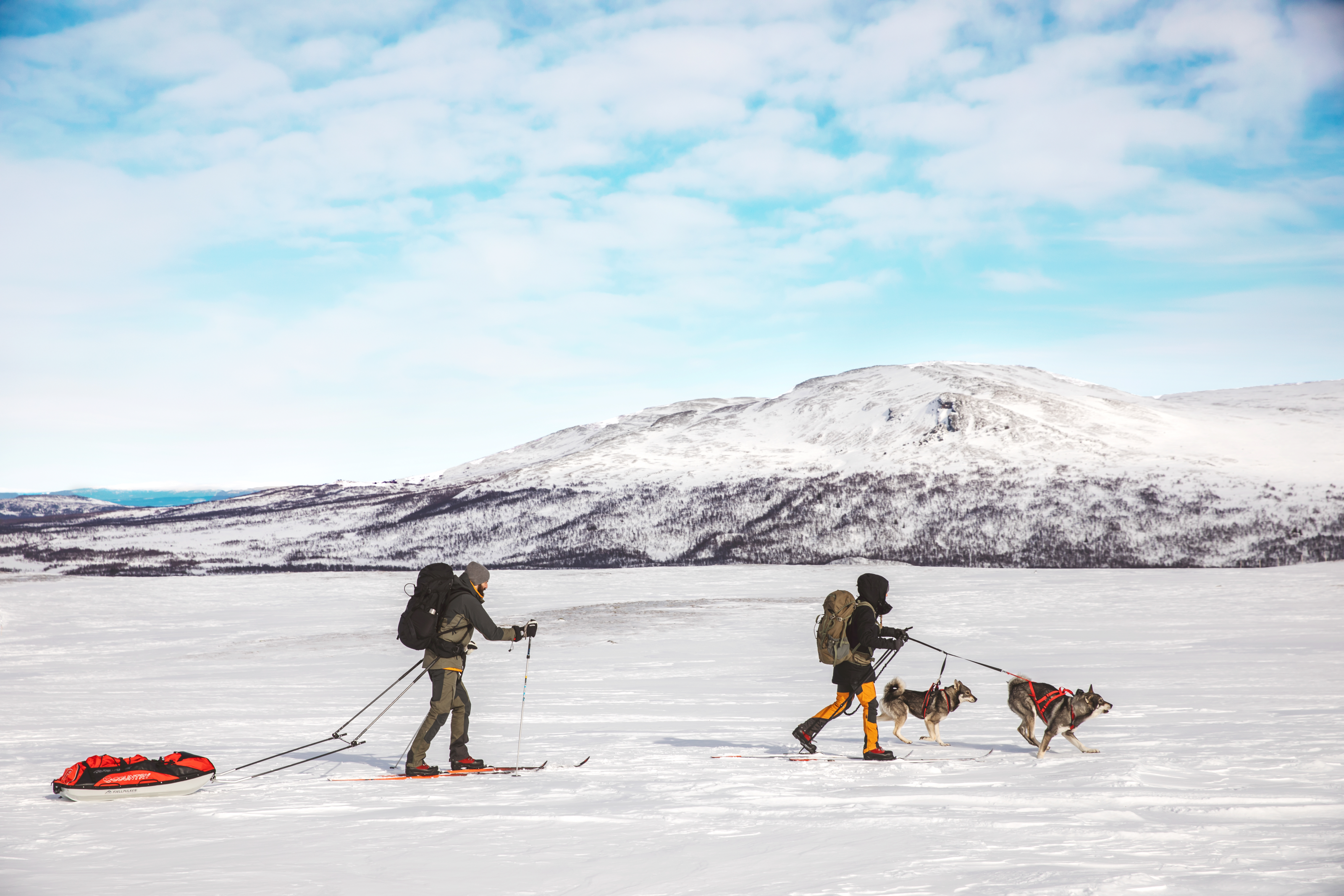Guide – How to choose the right touring skis
Amazing outdoor experiences await.
Snowy mountain peaks, virgin ski tracks in fluffy fresh snow. A string of unforgettable moments, a world of possibilities – and a whole lot of exercise into the bargain. Is it any surprise that many people discover their love of the mountains when skiing?
Touring is becoming increasingly popular and there are as many opportunities as there are enthusiasts. A large part of the charm is that you are free to choose your own route and kind of adventure.
What is a touring ski
While cross-country skis are made for speed on well-prepared tracks – without any regard for stability or load-bearing capacity – touring skis are used to cross snowy expanses of terrain.
Touring or backcountry skis are both wider and heavier than cross-country skis. Most have steel edges. If you’re going to make your own tracks in deep snow, cross crusted snow at Easter or carry a heavy backpack without needing snow shoes, then touring skis with steel edges are definitely for you.
Touring skis give you the necessary control uphill in open mountain terrain and downhill in exciting undulating landscapes between the birch trees of the mountain forest.

What kind of backcountry skis should I choose?
Backcountry skis, or touring skis, are available in many varieties. From relatively narrow skis, to classic mountain or all-round skis. There are also wider, easy-turning models for more rugged terrain.
What suits you depends on the kind of use, the type of terrain, your weight and your skiing ability. For the best possible experience on your touring skis, it is important that you make the right choice.
Classic touring skis
Narrow, classic touring skis are the right choice for light mountain tours without heavy a pack. Classic touring skis have a robust construction and are wide enough to be stable and good in loose snow. They are also narrow enough to fit in prepared tracks.
Classic touring skis have a good camber, a wax pocket and can be used with skins. They often also have a narrow waist to provide better control when skiing downhill.
A perfect ski for those who want a slightly better load-bearing capacity than ordinary cross-country skis, if you’re going on a ski trip in the mountains at Easter.
Wide backcountry skis and hunting skis
These are the skis for the more adventurous types, for those carrying a heavy backpack or making their own tracks.
Wide backcountry skis work well for summit tours, expeditions and hunting. The soft core gives excellent turning properties for easier skiing downhill.
Wide touring skis are not suitable for prepared tracks – they are too wide, but they are excellent in loose snow. On wide backcountry skis, it is normal to use skins.

How to choose the right length of touring ski
Classic touring skis should be about 20 cm longer than your height. Wide skis can be about 10 cm longer. As a rule of thumb: The wider the ski, the shorter it can be.
Short skis are easier to ski on in the forest and rough terrain.
Your weight also affects what length of ski you should have. If you don’t weigh much, skis that are too long can become slippery. If you are heavy, skis that are too short will give you poor glide.
It is better to have a more flexible ski than one that is too stiff.
Bindings for touring skis
Touring skis have stronger bindings and more stable ski boots. There are two main types of binding for touring skis: a 75 mm binding and a BC binding (BC stands for Backcountry).
- The BC binding is a stronger version of the modern cross-country binding. The BC binding provides better mobility and a lighter motion than the 75 mm binding, as the foot is only attached to the front of the boot.
- The 75 mm binding is easier to turn with and provides better stability, as much of the boot sits inside the binding. There are also more substantial versions for tough terrain, both with and without a climbing wire.
Touring ski poles
It is important that the rest of the equipment is also tailored to your needs. Among other things, the poles should have baskets that enable them to be used on loose snow and be about 30 cm shorter than your height.
In deep snow, you can choose poles that are 35–40 cm shorter. You could also go for telescopic poles, so you can change the pole length according to the terrain and descent.
Remember a map and compass and always follow the map
Even if you use GPS in the mountains, you must still have a paper map and compass with you, and be able to make good choices about routes. Because you can’t always rely on the markers.
Markers in the mountains may have blown down, or there may be other reasons why you should not follow them. So always track your route on the map, so you know where you are at all times.
The M-711 map series covers the whole of Norway on a scale of 1:50,000. There are also specially adapted map series for different mountain areas.
Dress for backcountry skiing
With the Abisku range, you can perform at your best in demanding winter conditions. A robust, durable and protective collection, developed for ski touring but equally well suited to other winter activities.

